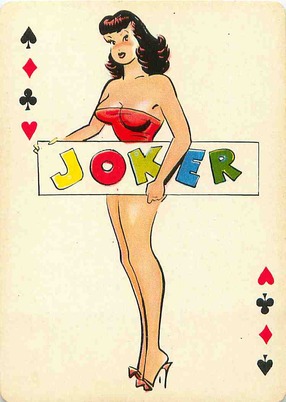
Explain why television shows are allowed to increasingly make teenage girls the targets of sexualization and objectification, while few people raise any sort of protest.
Explain why your part of the planet condemns the way fundamentalist Arab cultures treat women but allows a subtler, and yet destructive, form of cultural repression.
The latest target of concern is Victoria’s Secret, which has begun marketing a “college line” of sexy underwear to teenage girls, reinforcing the idea that they are mere objects.
| | Why do people on your planet do such things and yet demand proper behavior from people? I’m certainly not arguing for the release of all those men who are serving prison sentences for their behavior. Quite the opposite — plenty of evidence exists to show that retailers, advertisers and entertainment media do considerable damage to young girls without ever having to physically lay a hand on them. For this, they are not punished. As culturally sanctioned abusers, they become quite wealthy. Jennifer Stevens Aubrey, a University of Missouri researcher who studies sexual objectification in the media, put it well when she told the Orlando Sentinel, "It's much easier to kick a chair than to kick a person. Why? Because the chair doesn't have feelings. When we routinely treat girls and women as objects, we should expect that it becomes easier, as a culture, to treat girls and women as less than human." Little girls, as the critics are quick to note, are unaware of what it means to be sexy or provocative. But the clothing they wear and the growing media assumptions about their body image shape the attitudes of those around them. And eventually they shape their attitudes, as well. The American Psychological Association released a report on the “sexualization of girls” in 2007 that put this in startling terms. It found strong evidence that cultural pressures make it harder for young women to perform mathematical equations or think logically. They also give rise to increases in sexism, sexual harassment and the demand for child pornography, and decreases in the number of young women seeking careers in science, technology, engineering and mathematics. That’s heavy stuff, and yet, every time one of these sanctioned abusers digs to some new depth of exploitation, it is accompanied by a mere smattering of outrage from various quarters, usually from some feminists on the left and religious groups on the right, with the reasoned voices of academic researchers mixed in. None of this is enough to move the needle an inch. Before Victoria’s Secret’s new clothing line, the same outrage came after actress Elizabeth Hurley last year started a new line of tiny bikinis for young girls, and after Target began selling pink silk padded bras for tweens. Even Lego has been criticized for its new line of girl figurines dressed in miniskirts. So much of the criticism comes with resignation, guided by the idea that you can’t fight market forces. In an otherwise strong Huffington Post blog on the subject last fall, author Jim Taylor said, “I can't really blame companies that sexualize young girls to fatten their bottom line. In the amoral free-market system, that is their reason for being.” Who said the free-market system has to be amoral, and when did that condition become acceptable? Why do universities offer business ethics courses if profit is the only concern? Thankfully, not all the young girls are as resigned. Two teenagers, 15-year-old Julia Bluhm and 14-year-old Izzy Labbe, recently succeeded in getting Seventeen magazine to pledge to no longer alter photos to create impossibly perfect images. A recent U.N. Convention on the Status of Women showed evidence that many girls and their organizations, including Girl Scouts USA, have had enough of being objectified. You could explain all this to your alien friend, along with a quick lesson on your planet’s strange cultural forces. Just don’t blame him if he decides he’s better off going home. |

 RSS Feed
RSS Feed

